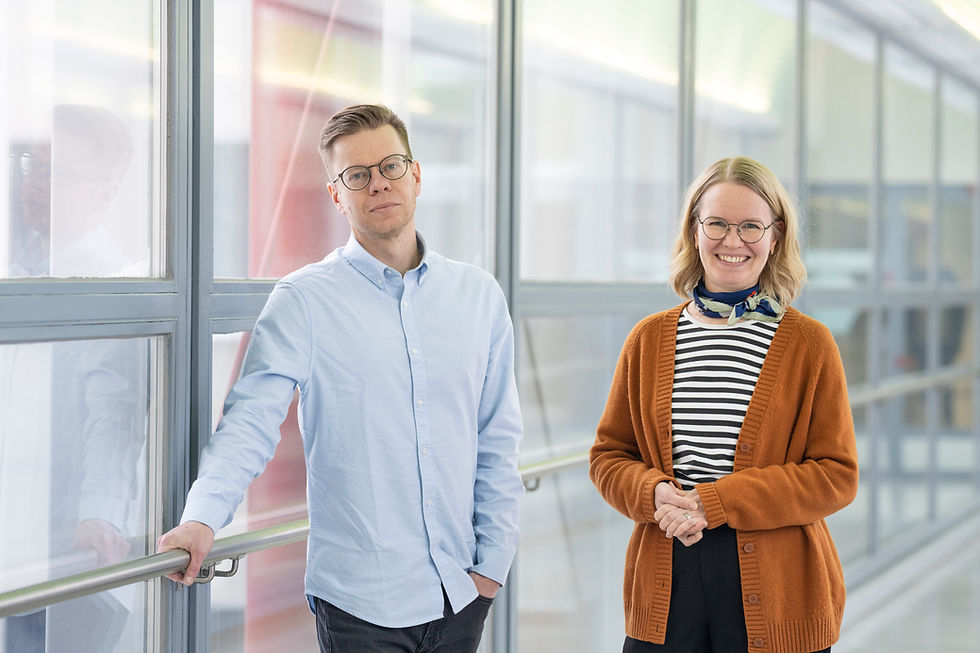Finnish frontline opera singers helping E3 to define the difference between human beings as emitters
- Nea Alanen

- Oct 7, 2022
- 4 min read
During the pandemic it became clear that also a human being can be a source of emissions and spread viruses in very different ways. In the E3 project, coordinated by Tamlink, we study all the various routes and ways of how airborne viruses are spread and one of the most interesting questions right now is: Is there some quality or feature in a person that makes one emit more pathogens than other people do?

Over 30 singers, including professional opera singers, attend the ongoing experimental study of Helsinki University Hospital (HUS), Tampere University, Tampere University of Applied Sciences (TAMK) and VTT. Also Speach Technique and Vocology Professors from the Aalto University and Tampere University are involved. The study takes about three weeks and includes testing the singer’s ability to cough, pronounce and sing in a manner that could reveal their propensity of emitting aerosols. After this singing exercise the singers travel to HUS Phoniatrics clinic and go through fiberoscopy to gain video image of their vocal tract. In addition to the scientific information, the fiberoskopic examination is also very interesting for the singers themselves because they get to see their own instrument on video in action probably for the first time.
Also it’s time to utilize the aerosol chamber that the Physics Lecturer Sampo Saari from TAMK invented last spring with his students. The updated version of the chamber is set in a bigger research chamber at the VTT premises, and it is used for capturing all the aerosols that the singers produce during the tests.

The study was conducted at the VTT premises in Tampere. The main leaders of the research are Doctor Anna Tuhkuri Matvejeff (HUS) and Saari (TAMK).

There is a certain research protocol that all the singers go through. It takes about an hour for them to produce all the needed sounds and singing. Meanwhile the aerosol physics researcher Ville Silvonen along with the researcher doctor Tuhkuri Matvejeff monitor the data being recorded on the machines. Afterwards the data gets analysed by Saari.
“All that multitudinous data from these tests will be there for me to analyse afterwards”, Saari confirms.
Of course a set of many other experts will be there to analyse the possible differences between people and how it might be related to spreading of viruses.

But why opera singers?
“Opera singers have a very steady voice and they can also emit a large variety of different kind of sounds” describes HUS E3 manager Doctor Enni Sanmark who is one of the people involved in the study as Tuhkuri Matvejeff's PhD supervisor.

“But I think where it started is the unemployment of singers and the desire to study the emitting in different registers and volumes. For example, if we notice that a soprano emits a lot of aerosols then we could possibly spot the places where one should protect oneself more.”
“And if singing actually does not emit that much aerosols, or what size are the aerosols produced during singing. There are so many levels on this study!” Sanmark anneals.
When the tests are ready, there will be thousands of lines of interesting data.
The presumption is that the louder one sings, the more he or she produces emissions. It is presumed that the longer and stronger one’s vocal cords are, the more they emit. The study will reveal more.
Frontline opera singers involved
The E3 has been honoured to have all the enthusiastic and professional singers contributing to the study, including the 75-year-old legendary opera bass Jaakko Ryhänen and the soprano Olga Heikkilä. But what motivates the singers to participate in this kind of study?
“The soul life of a singer revolves around his voice. What else could be more motivating than to get to use my voice for science” Ryhänen describes. He also thinks that singing in different languages produces different amount of spit as the articulation is very different for example in German or in Italian languages.
Soprano Olga Heikkilä singing "Silent night" in Finnish into the aerosol chamber. Tampere University aerosol physics researcher Ville Silvonen is monitoring the data. This is taking place in the VTT premises, Tampere. Video: Nea Alanen

Heikkilä agrees:
“This study is so very important for all of us and for all the performers and I want to be involved. I want to help the science. There is a big hope that research like this could provide an important data. Covid 19 pandemic prevented so many young singers from working and taking important first steps in professional life. We can not loose another generation of young professionals to the next pandemic.” she emphasizes.
This study is one of the many important multidisciplinary studies made within the E3 project during these 2,5 years that help us understand how the pathogens spread from and between the people.
“The thing I really want to emphasize about this project is that never in a million years would it have been possible without all this multidisciplinary expertise from various fields of science and all the other experts too, including the singers!” Saari highlights.
This article was originally posted at the E3 project website.



